Four Factor Friday: December 16, 2016
This article was originally published at The Secondary Break, run by Adrian Atkinson.
This edition of Four Factor Friday is centered around the showdown against Kentucky tomorrow. Let’s get into it.
When Kentucky has the ball
The Wildcats have won games by not turning the ball over and running the opposition off the floor.
Kentucky only turns it over on 14.6 percent of their possessions. This mark is among the top-5 in the country, according to Ken Pomeroy. The Wildcats have fewer turnovers than their opponent in every game this season.
This Kentucky team takes care of the ball and plays fast. How fast?
Kentucky’s average possession length is about 13.5 seconds. This means Kentucky shoots the ball about every 13.5 seconds. Pomeroy rates this mark fourth in the nation. Past Kentucky teams directed by John Calipari have averaged somewhere around 17.6 seconds in possession length. The 2010 team, run by John Wall, took a shot every 16.2 seconds.
The Wildcats have taken 73 or more shots in half of their games this year, including a season-high (83 shots) against Arizona State. In its five-point loss to UCLA, the Wildcats took 14(!) more shots than the Bruins.
This urgency paired with an effective field goal percentage of 53.6 percent has the Wildcats turning in dominant performances. Like when Kentucky scored 1.39 points per possession against Arizona State.
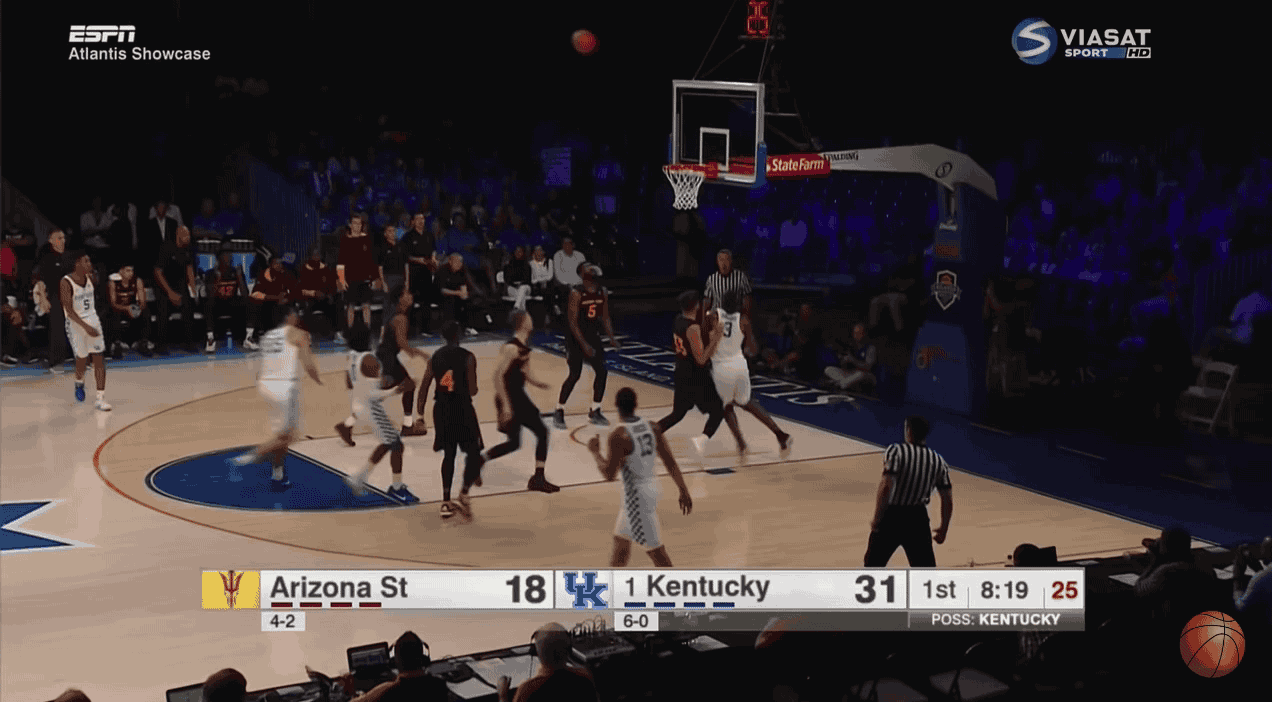
The Wildcats rely on offensive rebounds, transition offense, and tons of points in the paint to fuel its offense. Through 10 games this season, Kentucky is pulling down almost 40 percent of their missed shots.
Kentucky can play four guards at a time, and each one can get to the rim. The Wildcats have outscored their opponents 424 to 269 in the paint this season. And about 58 percent of Kentucky’s points come from two-point baskets.
While freshman Malik Monk is shooting 38.5 percent from three, Kentucky shoots a pedestrian **32.4 percent from behind the three-point line as a team. If you exclude Monk, the rest of Kentucky only shoots about 29 percent from three.
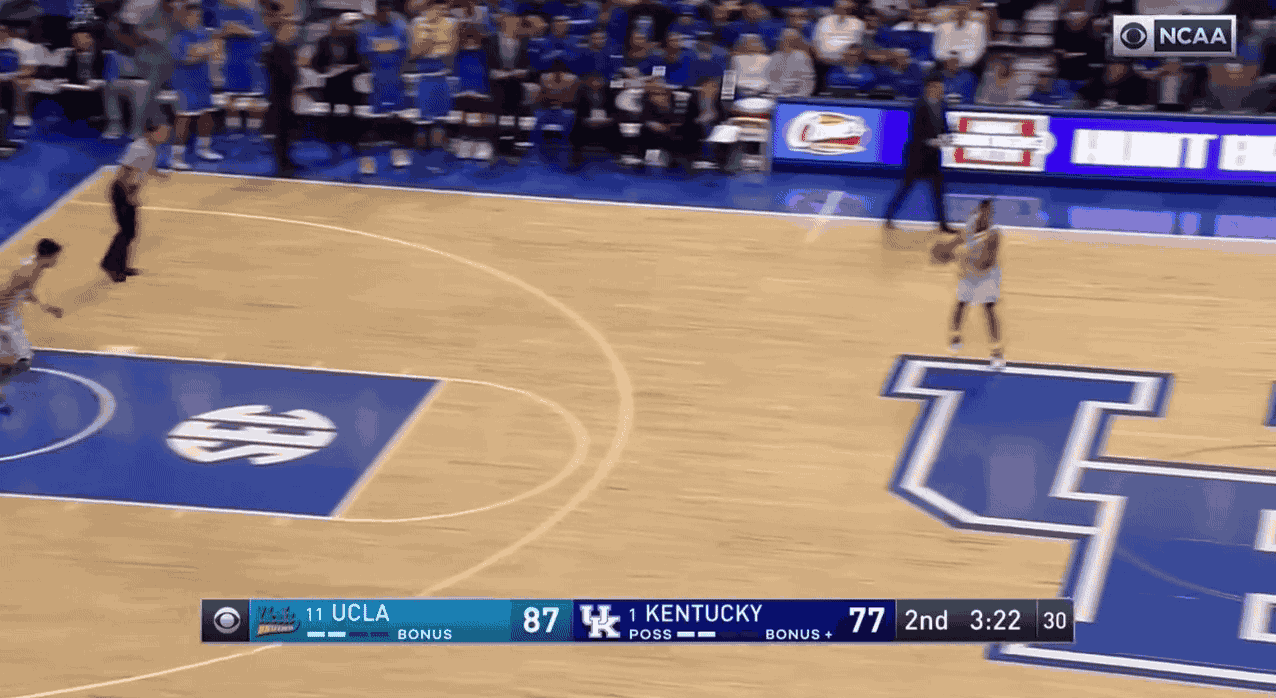
As far as free throws, Kentucky owns a 36.1 percent free throw rate. Coach Calipari has urged players like Monk to get to the line more. But classmates De’Aaron Fox and Bam Adebayo both draw over six fouls per 40 minutes. Those rates are in top-100 in the nation.
When North Carolina has the ball
North Carolina’s offense hasn’t been the same without point guard Joel Berry II the past two games (See Adrian’s post for more proof).
UNC turns in an offensive effective field goal percentage of 52.6 percent on the year. Without Berry playing at all, Carolina’s eFG% is 43.3 percent over the last two games.
Senior Isaiah Hicks is 6-of-14 from the floor over the last couple games. As of late, Hicks isn’t getting many high-percentage shots.
Watch this entry pass from Kenny Williams to Hicks against Tennessee. Hicks catches the ball a good distance from the basket, dribbles once into a double-team, and gets his shot blocked.
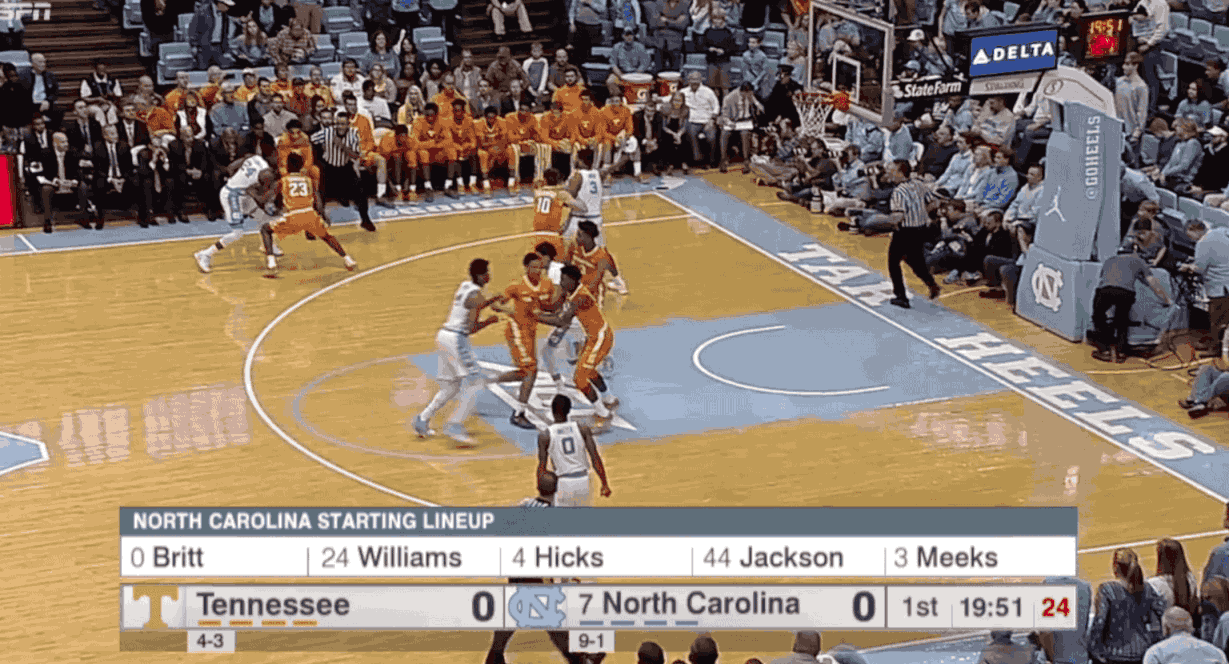
Now, Hicks could of tried to pass out of the double-team here. A better alternative might be getting Hicks the ball where he doesn’t have to dribble at all and he can go straight to the basket.
Poor shot selection like this combined with turnovers is a bad recipe for Carolina. North Carolina is turning it over on 18 percent of its possessions this season. That is mark is slightly better than the Division-I average (19.2 percent).
The Tar Heels came up empty on seven straight possessions against Indiana that helped the Hoosiers build a 17-point lead in the first half that Carolina couldn’t overcome.
Against Tennessee, UNC went scoreless for a couple four minute stretches in the first half and trailed by eight at the break. Carolina won that game 73–71, but it meant erasing their largest halftime deficit to win since 2011.
The Tar Heels need to limit turnovers, and take higher-percentage shots to beat teams as talented as Kentucky.
Carolina has done that at times this season. For example, take a look this possession against Wisconsin compared to the one against Tennessee.
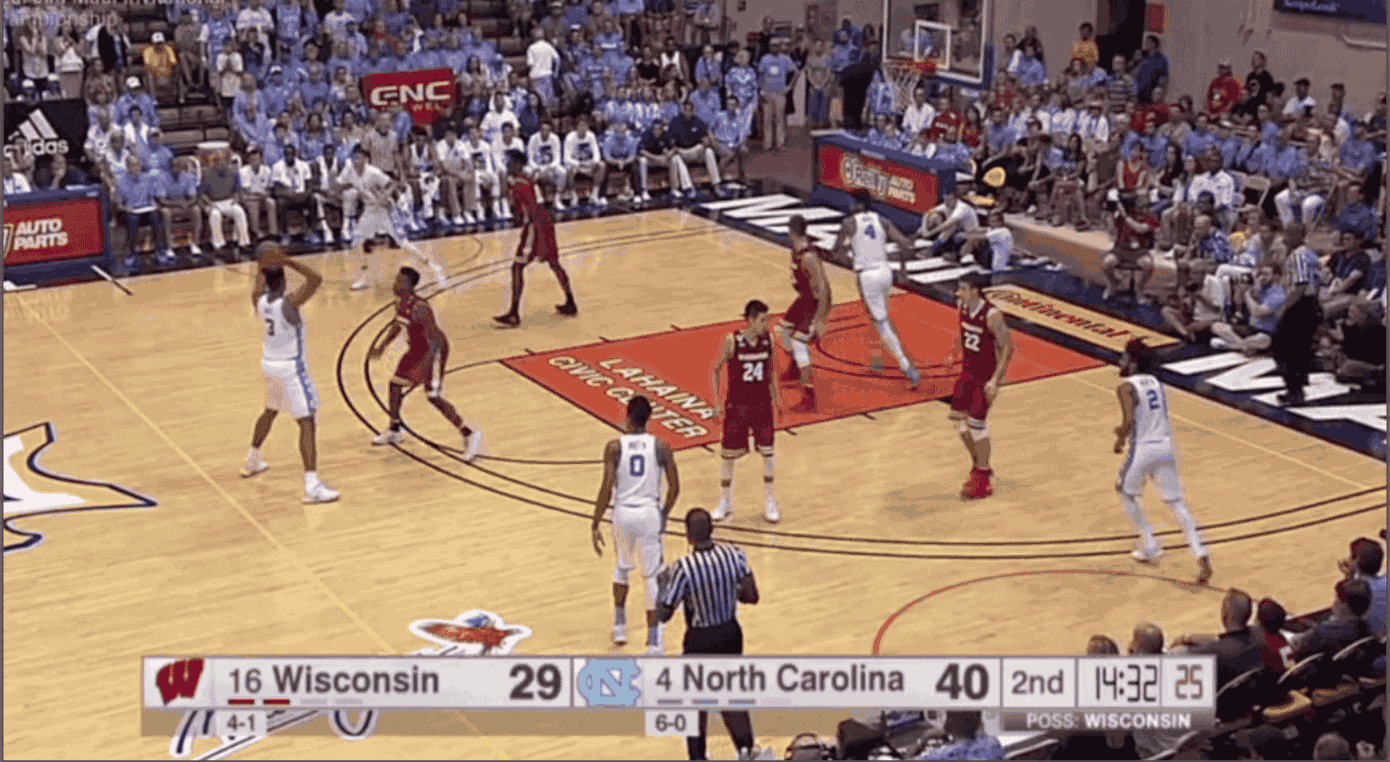
Justin Jackson delivers a great entry pass to Isaiah Hicks, finding the senior a couple feet from the basket. Hicks catches and shoots. No dribble. No double-team. Two-points.
When UNC shoots poorly, it relies on second chance points and its ability to snag offensive rebounds. Carolina leads the country in offensive rebounding percentage. The Tar Heels rebound about 43 percent of their missed shots.
This why North Carolina can sometimes shoot worse than its opponent, and still win games. It has done that against Davidson and Tennessee this season. Carolina shot worse than its opponent these two games, but outscored them 43–15 in second chance points.
Kentucky knows Carolina is going to crash the glass. It’s a clear advantage for UNC, and even more of an advantage because the Wildcats only rebound about 32 percent of their opponents’ missed shots.
UCLA shot a cartoon-like number (60.6 eFG%) against Kentucky. The Bruins also beat the Wildcats on the glass a few times to score easy buckets. Freshman TJ Leaf beat Wenyen Gabriel to the ball, and scored a quick bucket after Bam Adebayo goal-tended here:
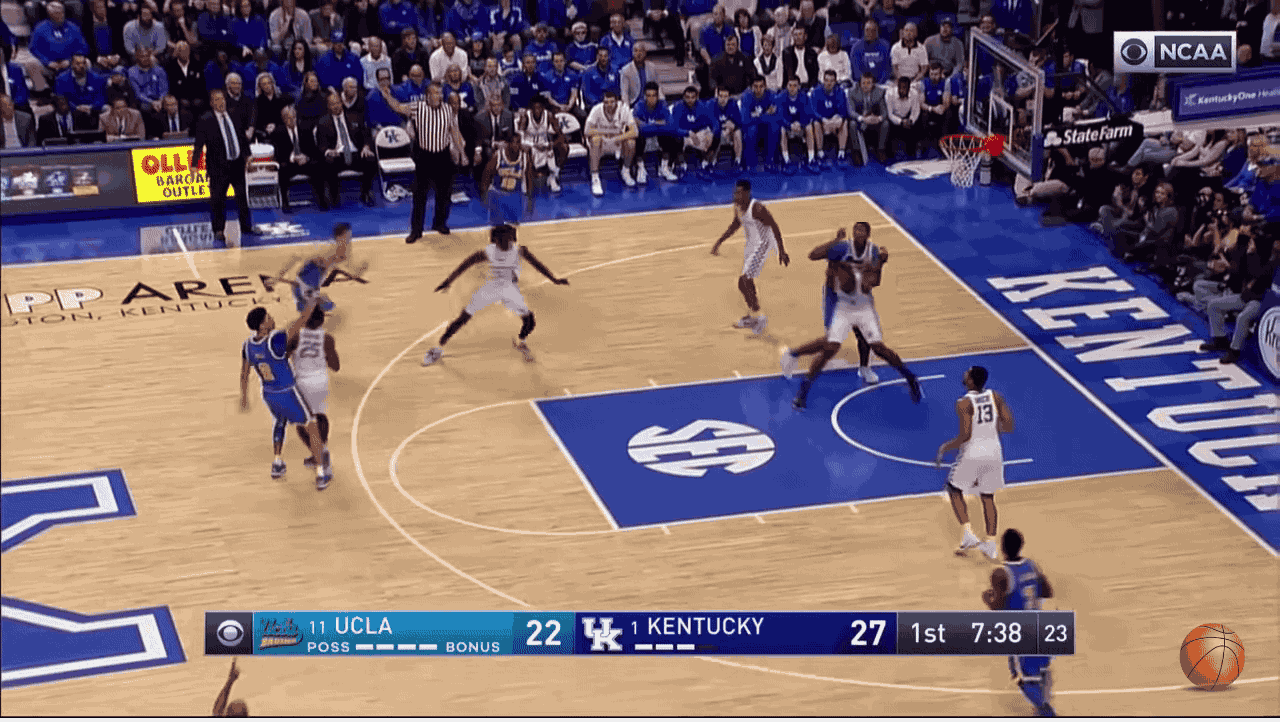
Could Kennedy Meeks and Tony Bradley present similar rebounding problems to the Wildcats?
The Meeks-Bradley duo accounts for 46 percent of Carolina’s offensive boards. Bradley has pulled down seven or more offensive rebounds in three of 11 games this year. And the freshman’s individual 22.6 percent offensive rebounding rate leads the country.
Carolina is getting to the foul line more this season too. The Tar Heels’ 39.7 percent free throw rate is improved from a year ago. UNC posted a 32.3 percent free throw rate last season.
This is important because Carolina has won every game where it records a higher free throw rate than its opponent. UNC has made 206 free throws, its opponents have attempted 178 free throws, a metric that should please head coach Roy Williams.
What does this all mean?
Carolina has yet to face a team that can score like Kentucky without turning it over often. While Indiana shot a high percentage to defeat the Tar Heels, the Hoosiers also turned it over on 22 percent on its possessions keeping Carolina within striking distance.
The Tar Heels probably won’t shoot like UCLA did against the Wildcats, but Kentucky should be concerned with Carolina’s ability to beat them on the offensive glass. And while Kentucky likes to run, Carolina does too.
So now for some room-temperature takes
If the Tar Heels win, it’s likely because they avoid empty possessions (turnovers/poor shot selection), defend in transition without fouling, and force the Wildcats (maybe not Monk) to beat them from deep.
If Kentucky wins it’s likely because they limit UNC’s offensive boards, keep Carolina off the foul line, and make a high percentage of their three-point shots.
No score prediction. But for fun here is a guess how the four factors might play out, so you can all tell me when I’m wrong.
Roy Williams is 7–5 against Kentucky as UNC’s head coach. John Calipari has handed out 4 of those losses. Calipari is 4–2 against Carolina.
Check out past UNC-Kentucky games here.
Either way, if both teams play to their abilities, it should be a lot of fun to watch.
This article was originally published Dec. 16, 2016 at The Secondary Break, run by Adrian Atkinson. Find more analysis there, and other four factor friday columns too. If you dig this kind of stuff, signup for Adrian’s newsletter too.